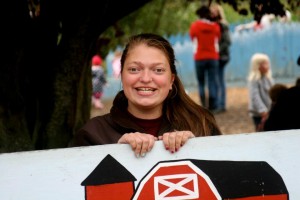 At age 4, Natalie Merlo was diagnosed with a facial condition that left her feeling self-conscious and very different from other people. While growing up, she even avoided having her photo taken. Through the work with her care team at Seattle Children’s Craniofacial Center, Natalie has gained confidence, has happily accepted who she is and has a powerful message for others – “it’s OK to be different.”
At age 4, Natalie Merlo was diagnosed with a facial condition that left her feeling self-conscious and very different from other people. While growing up, she even avoided having her photo taken. Through the work with her care team at Seattle Children’s Craniofacial Center, Natalie has gained confidence, has happily accepted who she is and has a powerful message for others – “it’s OK to be different.”
Natalie, now 18 years old, recently entered college with a new facial structure and a new outlook on life after completing two major surgeries. For most of her life, Natalie lived with a severe under bite and deep, wide-set eyes and cheek bones, as a result of a genetic condition called Crouzon Syndrome. While her features were typically brushed off by strangers, it still affected the way she thought about herself.
“These differences were things other people glazed over, and didn’t really notice at first glance,” said Natalie. “But to me, they were so unfortunately obvious. I wish I could say that I didn’t let these things phase me, but that was far from the truth.”
Natalie finds confidence in her family of doctors
Natalie found comfort and gained confidence partly through the help of her doctor at Children’s. It all started when she met with her pediatrician, Michael Cunningham, MD, PhD, medical director of Children’s Craniofacial Center, who she has seen since age 4. Cunningham showed interest not only in her facial structure but also in her pre-k life.
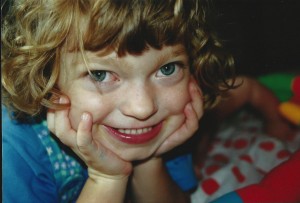 Natalie found that every member of her care team treated her with the same respect while showing genuine interest in her life. As a young girl on a 14-year path to a life-changing surgery, it was just what she needed.
Natalie found that every member of her care team treated her with the same respect while showing genuine interest in her life. As a young girl on a 14-year path to a life-changing surgery, it was just what she needed.
“Some people have great relationships with teachers or coaches— I have that with my doctors,” said Natalie. “They know me better than any of my instructors ever did and I can joke with them and talk about life. They really feel more like uncles than doctors.”
Natalie’s close relationship with her doctors transcended from the doctor’s office and into the operating room. Early on, Natalie’s parents handled most of her medical decisions. Then as she got older, she became more involved in these life-changing choices that would affect her future. By age 16, Natalie began preparing for a major surgery with her surgeon Richard Hopper, MD. Hopper told Natalie her options, told her what he recommended and then left the decision up to her.
“After a lot of thinking, I decided to take Dr. Hopper’s recommendation and do the surgery that took the longest, but had the best outcome for life after surgery,” said Natalie.
Accepting the changes
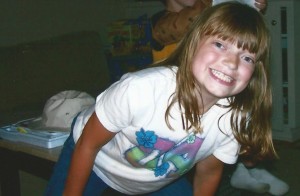 The preparation for the big surgeries to reshape her face lasted two years. Every six weeks, Natalie had her braces adjusted by orthodontist, Hitesh Kapadia, DDS, PhD, to realign her jaw and move her teeth, ensuring they would be properly placed for this major surgery.
The preparation for the big surgeries to reshape her face lasted two years. Every six weeks, Natalie had her braces adjusted by orthodontist, Hitesh Kapadia, DDS, PhD, to realign her jaw and move her teeth, ensuring they would be properly placed for this major surgery.
At the end of high school last year, Natalie underwent surgery to temporarily attach a titanium halo device to her skull. This device stayed on for about two months and slowly moved the bones in her face forward to their correct positions. Having the halo was a big adjustment for both Natalie’s facial structure and the way she saw herself.
“I always thought I stood out, and that people were looking at me like I was different,” said Natalie. “But after having this halo device on, I know what getting stared at based on appearance looks like. And now I realize it never happened to me, I just expected it and saw what I wanted to see.”
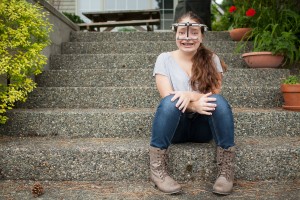 Soon Natalie learned that she didn’t want to waste her last summer before college caring about how other people saw her. So one day, she just let it go, and realized people were more uncomfortable with themselves for staring than with her.
Soon Natalie learned that she didn’t want to waste her last summer before college caring about how other people saw her. So one day, she just let it go, and realized people were more uncomfortable with themselves for staring than with her.
“As I got pictures together to hang on my dorm room wall in college, I found there were maybe 10 pictures of me from senior year,” said Natalie. “I’ve taken more pictures this summer than I did the entire school year. And I’ve spent the summer with a giant titanium device attached to my face.”
Starting a new chapter
Now that the halo device is off, Natalie has just finished her first semester of college in a new state with new friends and a new facial structure. Her life post-surgery has given her the confidence and strength to enjoy this new chapter of her life.
“When I first saw myself with the halo off, I couldn’t believe what I was seeing,” said Natalie. “I could see the gift that I had gotten from this surgery and started to embrace the new me.”
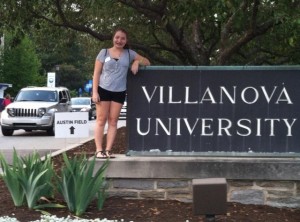 And though her treatment is nearing the end, she sees herself staying connected with the hospital that improved her quality of life.
And though her treatment is nearing the end, she sees herself staying connected with the hospital that improved her quality of life.
“I’m sad to be leaving Seattle Children’s and the wonderful people I’ve met there,” said Natalie. “I know I’ll find my way back there in some capacity in years to come – hopefully by volunteering in the summers when I’m home from college.”
Natalie’s story has been shared on the following national outlets. Read these stories to learn more about her journey:
- Huffington Post, “It’s OK to Be Different”
- Huffington Post, “Growing Up With Doctors”
- CBS News, “Natalie’s New Face”

